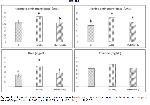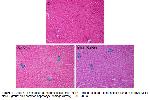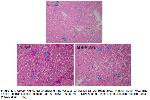The people are exposed to different chemicals and food additives cause of the changing consumption habits of the society, the sedentary lifestyle, the increase in mass food and food production, the low level of education and income, the increase in workload and the inadequacy of time, turn to ready food consumption, reasons such as uncontrolled food production, the extension of the shelf life of food. Many of these additives are increasingly recognized as a potential hazard for human health. One of the important food additives is sodium nitrite. Sodium nitrite is widely used for purposes as antibacterial, flavor-protecting and enhancer, color stabilizer and shelf-life extension
1,2. Sodium nitrite is generally considered as a poor carcinogenic substance, but it can cause cancer, hepatotoxicity, nephrotoxicity, tissue damage, inflammation and functional impairment when exposed to high doses
3,4. Also in toxicity cases the level of free radicals is increasing especially superoxide radical and nitric oxide interact easily and it causes the formation of another reactive free radical, peroxynitrite
5. Peroxynitrite a strong cytotoxic oxidant that plays an active role in free radical-induced, tissue injury, in the increase of reactive oxygen species (ROS) production and in the inhibition of the mitochondrial electron transport chain
5,6. The preservation mechanisms of antioxidants that can be taken endogenously and / or exogenously against nitrate and nitrite oxidation has not yet been defined. Today, research is very limited on the role of hormones such as growth hormone, estrogen, dehydroepiandrosterone and melatonin
7, which are found to be important contributors to the immune system against the adverse effects of nitrates and nitrites. The melatonin tryptophanamino acid derivative is a hormone and is produced especially in the pineal gland. However, it is also known that the melatonin receptors have been identified in the retina, ovaries, and the gastrointestinal system
7-9. Before the researches made in recent years melatonin has only been implicated in the regulation of biological rhythms but today it is known to be one of the strong endogenous antioxidants
9,10. The reduction of immunological functions and the ability of the immune system to respond to antigenic stimuli may occur, due to aging, exposure to chemicals, oxidative stress, radiation and food additives. Therefore, the risk of infectious disease, cancer and prevalence may increase
1,11. For this reason it was aimed to determine the effects of the melatonin (known as the neuro endocrine hormone which is expressed that antioxidant, antiinflammatory and have a protective effect against ischemia-reperfusion injury in various organs) on the pro-inflammatory cytokine markers that is important in the pathogenesis of these degenerative changes with liver and kidney damage induced with sodium nitrite.







